Product Overview - 4
Section 4 - Quantifying the Roof
When applying metal panels to the roof, there are various methods that can be utilised. Depending on the widths of panels, and also the traditional methods used in that particular region, some roofers prefer to "Block" the roof out (see explanation below) to achieve minimum wastage, whilst others will utilise our "Gen-Panels" approach where panels are "sided" and the off-cut cannot be utilised elsewhere.
23. Explanation of Blocking the Roof to minimize wastage
The blocking command originated in Australia where roofers told us how they quantified for their metal panels on the roof and how they utilized the off-cuts and wastage. The way it is done is to quite simply lay the metal panels on the roof in a series of blocks. Each block consists of a quantity and length of panels and hips and valleys are effectively ignored, knowing that the offcut from each panel leading up to a hip and valley can be used on another part of the roof.
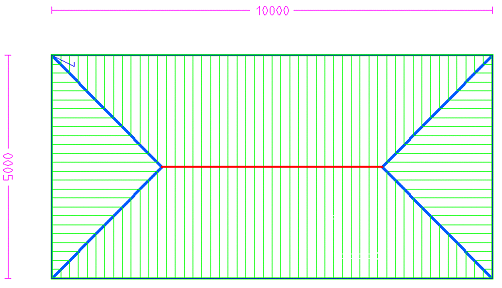
![]()
.......... 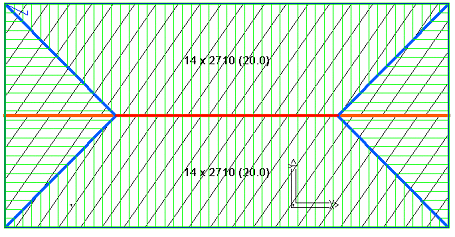
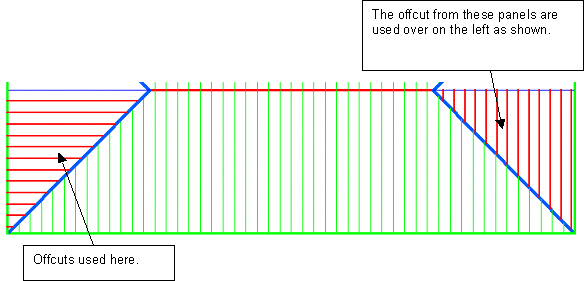
24. Offsetting the roof for greater accuracy
In order to simulate the real-life situation of laying panels on the roof, taking into account the clearances of the panels at hips, ridges and valleys, we were asked by one of our customers who is a major manufacturer of metal roofing panels, to more closely replicate the actual quantity on the roof.
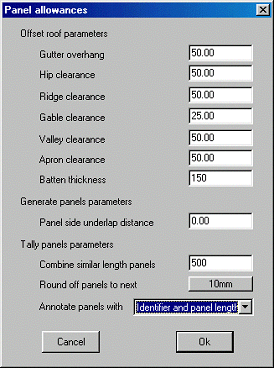 .......
.......
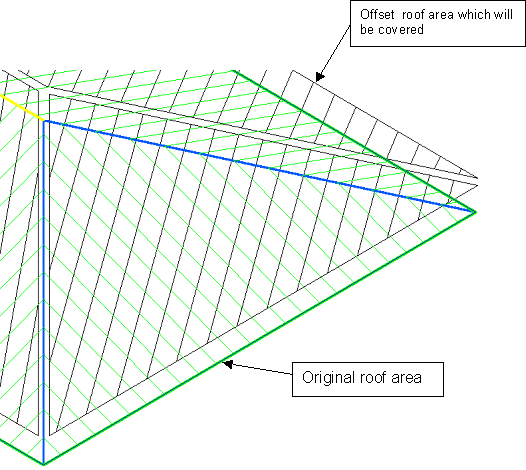
25. Generating Panels the conventional way
The blocking method is one method of quanitifying the roof cover, but another method commonly used is what we call the Generate Panels method.
This method takes into account the lap direction of the roof area and lays the panel on the roof, listing the panel lengths based on the maximum length for each piece, i.e. the longest length at a hip and valley. The triangular section at the end of each piece is deemed as waste for the purposes of estimating, so this method may give a higher wastage percentage than the Blocking method, but with certain types of panels, this process is more closely linked to real life practices.
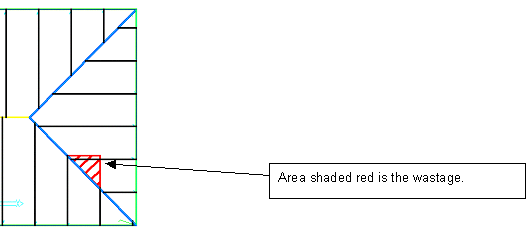
Whether you use the Gen-Panels approach or the Blocking Method, you will want to Tally the panels or blocks. The end result will show the complete cutting list for all of the panels on the roof, showing the total panel length, area and roof area, so that it is easy to see the amount of wastage reported.
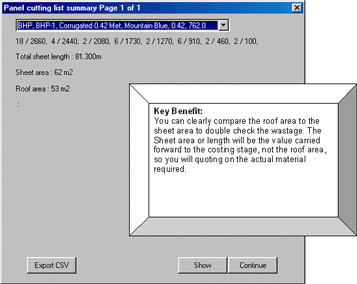
26. Splitting Panels for commercial and long span jobs
As a lot of metal roofing jobs in the commercial sector requires potentially a long panel length, and because handling restrictions can often mean that the panel needs to be joined, we have now added the ability to break the panels at any locations along the purlin centers.
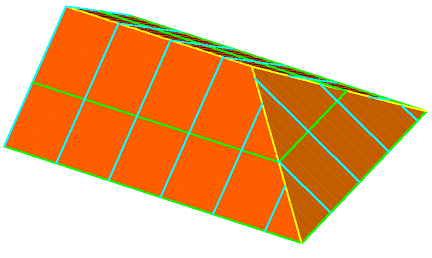
27. Inserting Translucent Panels
Another thing that occurred to us whilst developing the
split panel command was to allow the insertion of a different panel, ideally
a translucent, at any point on the roof. The software will also report the
total square area of the translucent, allowing you to compare with the roof
area, thus enabling you to quote as per specification, i.e. 15% of roof
area.
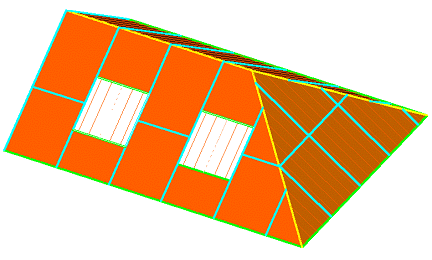
28. Linear Nesting of the cut sheets
Having generated the individual sheet lengths for the roof, we were then asked by a major metal roof manufacturer to automatically "nest" the sheets on continous rolls. The purpose of this was to minimise the wastage and create maximum usage out of any single run of roofing material.
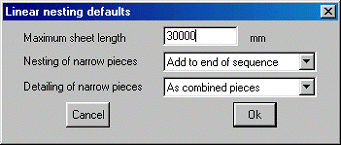

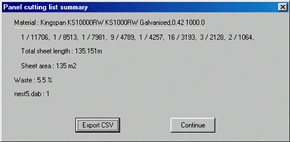
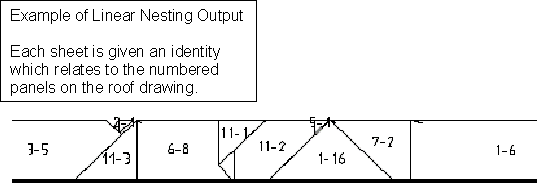
To go to the next section - Section 5 - Job Costing the Roof - Click Here
Order Now! - Product Pricelist/Order Form
